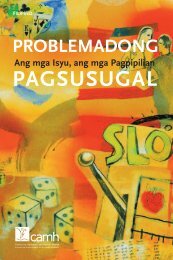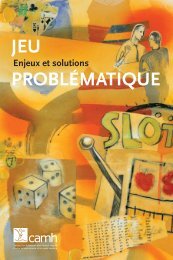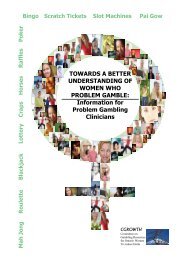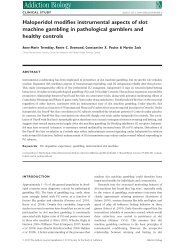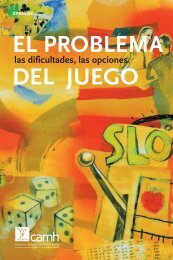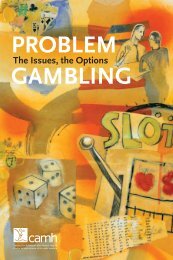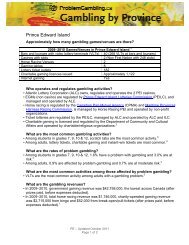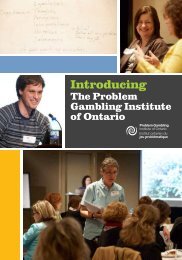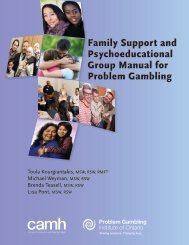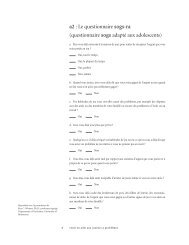Youth Making Choices: Gambling Prevention Program
Youth Making Choices: Gambling Prevention Program
Youth Making Choices: Gambling Prevention Program
Create successful ePaper yourself
Turn your PDF publications into a flip-book with our unique Google optimized e-Paper software.
Unit 8: Planning Responses to ProblemsAppendix BTeacher Resource 4 p. 1Decision-making ProcessThinking about and planning responses to problems will provide the mostorganized, flexible and adaptable way to achieve solutions. Decisions involvea combination of gathering information, exploring options and realizing how adecision will influence personal goals.It is important for youth to:• learn to be in touch with their messages, their feelings and their levels of stress associatedwith their feelings and how that impacts their decisions• learn to make decisions and solve problems in a systematic way that includes definition,goals, structured solutions and evaluation• appreciate the range of coping options that can be used to solve a problem and considervarious options for solving problems• recognize the emotions at work in conflict situations and come to regard conflict as aprocess of communication and negotiation.The ability to solve problems in a methodical “clear-headed” way is influenced by our emotionalstate, which in turn influences our perception of our self-confidence and how effective we feelabout our chances of solving a problem or realizing a goal. Being in touch with what our feelingsare telling us and how we are feeling may influence our decision making and ability to solveproblems and resolve conflict.Being in a relatively composed frame of mind is conducive to sound decision making,achieving goals and resolving problems and conflict. Our experience of how much or howlittle stress we feel is directly related to our perception of our ability to work our way throughimportant decisions, problems and conflict. Stress can be reduced by using various “physical”interventions (playing a sport, walking the dog) as well as rethinking the situation and feelingcapable of making different types of decisions (i.e., about goals, problems, conflict) in athorough and systematic way.Knowing that you have a systematic method for working through problems, decisions andconflicts in itself helps to promote a sense of self-efficacy and in turn tends to reduce stress. Tosome extent making decisions and overcoming problems and conflict all involve an element ofrisk because of the possibility of failure. Another way to promote effective decision making is tohave to be able to use a range of coping skills in a flexible and adaptive way.There is often a tendency for people to react to problems, decisions and conflict in familiar,almost automatic ways, e.g., “When someone annoys me I always give them the cold shoulder,”or “I always make decisions based on what is going to be the most fun at that moment.”Using a template or model to make decisions and solve problems is time consuming, and toyouth, who tend to live in the moment, may feel like a belaboured and tedious process. Tacklingthis concern head-on can be beneficial, and may help students to consider using a systematicapproach when faced with more involved decision making.<strong>Youth</strong> <strong>Making</strong> <strong>Choices</strong>: <strong>Gambling</strong> <strong>Prevention</strong> <strong>Program</strong>www.Problem<strong>Gambling</strong>.ca8.20




